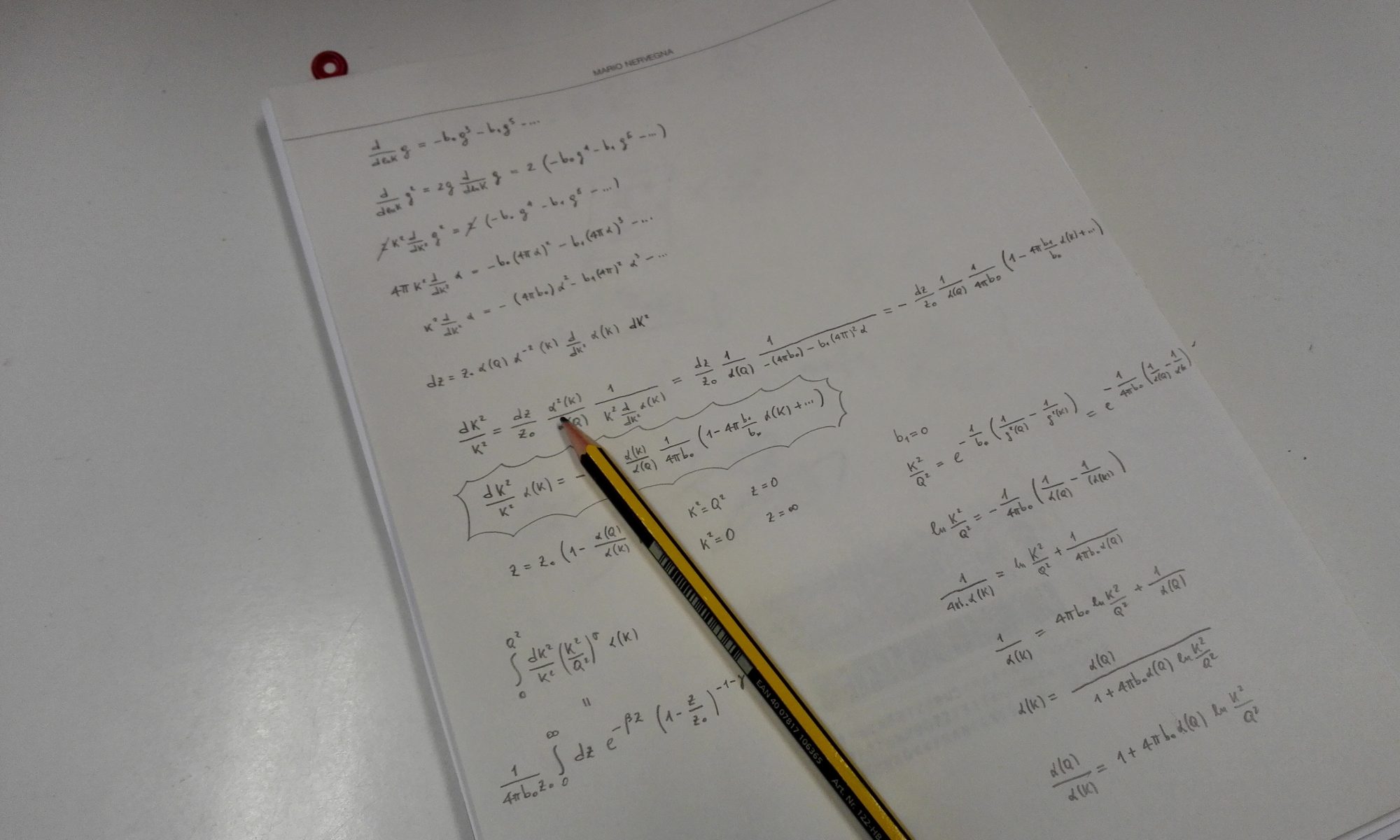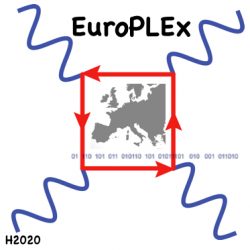What do we know (and not know) about confinement?
A journey into the confinement phenomenon and the depths of matter
by Nelson Lachini (EuroPLEx fellow, University of Edinburgh)
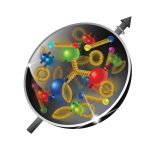 Have you ever wondered what is inside an atom? We started our journey into the mysteries of matter in 1897 when Joseph Thomson discovered the electron. A decade later, Ernest Rutherford measured unexpected patterns from particle collisions leading to the proposal of a tiny but very massive structure at the heart of the atom: the nucleus. After another decade, Rutherford himself observed the proton as the subatomic particle giving the nucleus its positive electric charge. The proton was the frontline of a cascade of discoveries throughout the 20th century: the neutron, the pion, the kaon, and hundreds of other particles … continue reading
Have you ever wondered what is inside an atom? We started our journey into the mysteries of matter in 1897 when Joseph Thomson discovered the electron. A decade later, Ernest Rutherford measured unexpected patterns from particle collisions leading to the proposal of a tiny but very massive structure at the heart of the atom: the nucleus. After another decade, Rutherford himself observed the proton as the subatomic particle giving the nucleus its positive electric charge. The proton was the frontline of a cascade of discoveries throughout the 20th century: the neutron, the pion, the kaon, and hundreds of other particles … continue reading
New measurement of the muon’s magnetism may hint at physics beyond the Standard Model
by Lucius Bushnaq (EuroPLEx fellow, Trinity College Dublin)
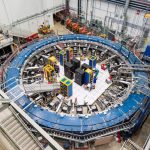 On April 7th of this year, the Fermilab experiment in Chicago announced a new measurement result for the magnetic moment of the muon. It further confirmed a long-standing discrepancy between its theoretically calculated and experimentally measured value, at the level of 4.2 standard deviations, teasing the possibility of new physics outside the current Standard Model of particle physics. However, a different theoretical calculation published on the same day casts some doubt on this possibility … continue reading
On April 7th of this year, the Fermilab experiment in Chicago announced a new measurement result for the magnetic moment of the muon. It further confirmed a long-standing discrepancy between its theoretically calculated and experimentally measured value, at the level of 4.2 standard deviations, teasing the possibility of new physics outside the current Standard Model of particle physics. However, a different theoretical calculation published on the same day casts some doubt on this possibility … continue reading
Paul Dirac: when the beauty surpasses the scientific method
by Nico Battelli (EuroPLEx fellow, Trinity College Dublin)
Berlin, 23 August 1926
Dear Ehrenfest,
[…]
I am toiling over Dirac. This balancing on a dizzying path between genius and insanity is terrible. Nothing that one can grasp firmly in hand! Best wishes for a happy vacation to you and yours from your
Einstein
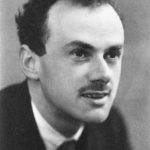 In this letter to the physicist Paul Ehrenfest, Albert Einstein complained about the unintelligibility of Paul Dirac’s recent work on Quantum Mechanics.
In this letter to the physicist Paul Ehrenfest, Albert Einstein complained about the unintelligibility of Paul Dirac’s recent work on Quantum Mechanics.
Let us take a step back: we are at the end of July 1925, at the library of St. John’s College in Cambridge, where a small group of students is engaged in the study of the theory of Special Relativity, Paul Dirac announces to the tutor Sir Ralph Howard Fowler that he has found the solution to the “significant difficulty” of the new theory … continue reading
Can scientists become supervillains?
The need for interdisciplinary approaches to science
by Daniel Jenkins (EuroPLEx fellow, University of Regensburg)
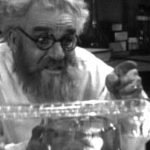 In science fiction movies it is often portrayed that science can be done in isolation: one very intelligent person sits in a laboratory in their basement and discovers some secret that proves that all science beforehand was wrong, normally followed by some explosions, natural disasters, or said scientist becoming a supervillain.
In science fiction movies it is often portrayed that science can be done in isolation: one very intelligent person sits in a laboratory in their basement and discovers some secret that proves that all science beforehand was wrong, normally followed by some explosions, natural disasters, or said scientist becoming a supervillain.
However, this is never how science is done in real life, no one works in isolation; in reality, progress is made by many different fields working together, with large, often international, collaborations of people working on every small step. And this has become increasingly true in the modern age, as the problems get harder and harder the collaborations needed become bigger and bigger … continue reading
The Higgs boson: elementary or composite?
Is the Higgs boson an elementary particle? A conversation with
Alessandro Lupo (EuroPLEx fellow, University of Edinburgh)
You may think that the best way for a physicist to describe their work is to peek into one of our usual working days through laboratories equations and computers, to see what happens, how we do what we do, and perhaps why.
 But maybe, the quickest way into the life of a researcher is simpler than that. Maybe it is as simple as a walk in a park on a summer day, when you are explaining to someone curious enough what it is that you are trying to find in all those numbers. And this is possible because all the maths that a lot of people fear, despite being a valuable ally in our search for the truth, is not necessary to tell our story which, I am sure, is accessible to everyone.
But maybe, the quickest way into the life of a researcher is simpler than that. Maybe it is as simple as a walk in a park on a summer day, when you are explaining to someone curious enough what it is that you are trying to find in all those numbers. And this is possible because all the maths that a lot of people fear, despite being a valuable ally in our search for the truth, is not necessary to tell our story which, I am sure, is accessible to everyone.
Q: So what is your research about?
A: I work on models in which the Higgs boson, a particle discovered in 2012, is not fundamental but it is composed by other, smaller particles … continue reading
EIC: an investment for the future
USA, Europe and a machine that will reveal the quantum secrets of Nature
Lorenzo Barca (EuroPLEx fellow, University of Regensburg)
EIC is the acronym for Electron-Ion Collider, a particle accelerator that will be built over the next ten years at the BNL (Brookhaven National Laboratory).
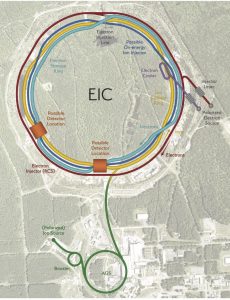
It is considered a bridge to the physics of the future, since it will try to prove or disprove current theories of subnuclear physics. The estimated cost for its construction varies between 1.6 and 2.6 billion dollars, so it seems appropriate to ask whether it is worth it. What will be the effective benefit to the world’s population after having spent these public funds trying to make new scientific discoveries? According to a perhaps apocryphal anecdote, it is the same question that William Gladstone posed to Michael Faraday about his studies on electricity, to which Faraday quickly replied “I don’t know, Your Excellency, but I’m sure you’ll find a way to tax it.” … continue reading
